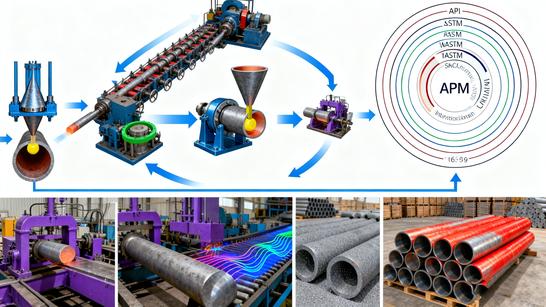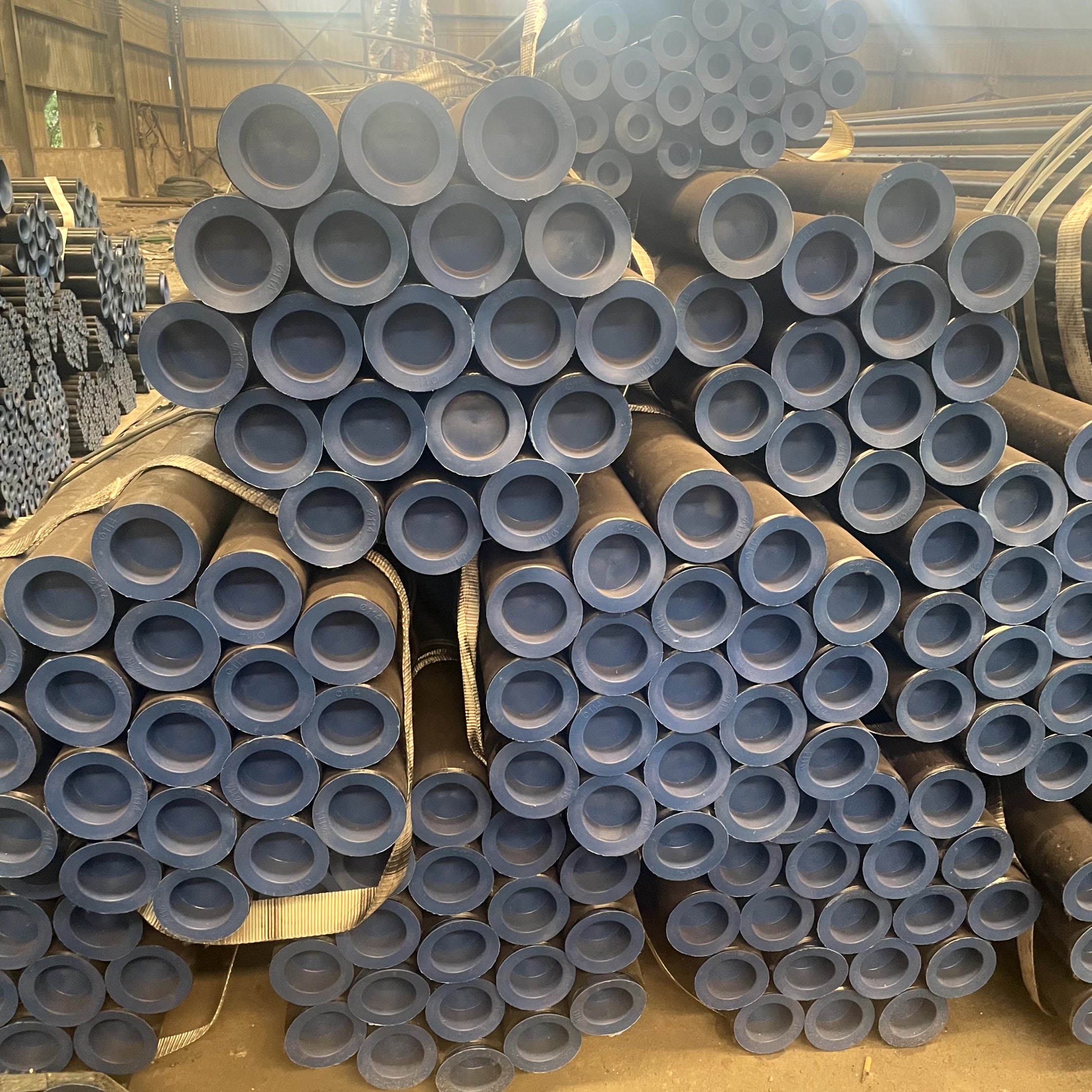I. Introduction: The Balance of Precision and Cost—Decoding the Seamless Pipe Dilemma
In the world of industrial piping and mechanical engineering, the Seamless Pipe stands as an indispensable hero in high-pressure and high-temperature applications. Produced by piercing a solid steel billet, it inherently possesses uniform strength and superior pressure resistance compared to its welded counterparts.
However, before finalizing your procurement list, a critical decision must be made: should you opt for Hot Finished Seamless (HFS) or Cold Drawn Seamless (CDS)? This choice is not merely about the product itself; it’s about balancing your project’s Total Cost of Ownership (TCO), final performance requirements, and subsequent machining needs. An incorrect choice can lead to skyrocketing processing costs or compromise system reliability.
This article will break down the two primary finishing processes for SMLS (Seamless) tubes, helping you master their manufacturing differences and performance characteristics.
II. The Foundation of Hot Working: Hot Finished Seamless (HFS)
Hot Finished Seamless (HFS) is the foundational finishing method for the seamless tube after the initial piercing process.
-
Manufacturing Process: The tube is dimensionally refined through a series of hot rolling and sizing operations, conducted above the steel's recrystallization temperature. This is a highly efficient and cost-effective process.
-
Performance Characteristics:
-
Lower Cost & Quick Lead Time: Due to the simpler manufacturing steps, HFS offers a cost advantage in high-volume production.
-
Broad Suitability: It is particularly well-suited for producing large-diameter and thick-walled Seamless Pipe.
-
Mechanical Properties: It offers good strength and ductility for general structural and fluid transfer applications.
-
-
Application Limitations: Because the finishing occurs at high temperatures, the dimensional accuracy (tolerance) of HFS is lower, and the surface carries a rough layer of mill scale, usually requiring further machining to meet high-precision requirements.
In summary, if you need a cost-effective, large-diameter pipe primarily for general structural or low-precision fluid applications, the Hot Finished Seamless (HFS) tube is your economical solution.
III. Precision is Paramount: Cold Drawn Seamless (CDS)
Cold Drawn Seamless (CDS) is a secondary "refinement" of the HFS tube, engineered to pursue the ultimate in dimensional accuracy and surface quality.
-
Manufacturing Process: The HFS tube is cleaned, lubricated, and pickled (to remove mill scale). It is then forcefully drawn (pulled) through a carbide die, often over an internal mandrel, at or near room temperature.
-
Core Advantages:
-
Extreme Dimensional Accuracy: Cold Drawn Seamless (CDS) can achieve extremely tight tolerances (e.g., H8/H9) far superior to HFS, which is vital for mating components.
-
Smooth Surface Finish: The cold drawing process compacts the surface, resulting in a smooth, bright finish that is often ready for direct application with minimal or no additional machining.
-
-
Enhanced Strength: The drawing process induces "work hardening" in the steel, significantly increasing the tube's yield and tensile strength, making it an ideal choice for high-pressure service.
In summary, if your application demands stringent requirements for precision, surface finish, and strength—such as manufacturing key components for hydraulic systems—the Cold Drawn Seamless (CDS) tube is the non-negotiable choice.
IV. The Critical Decision Matrix: HFS vs. CDS
When procuring SMLS tubing, use this matrix to guide your decision:
| Feature Comparison | Hot Finished Seamless (HFS) | Cold Drawn Seamless (CDS) |
| Manufacturing Temperature | Above Recrystallization (Hot Work) | Room Temperature (Cold Work) |
| Dimensional Accuracy | Lower (Wider Tolerance Range) | Extremely High (Tight Tolerances) |
| Surface Condition | Rough, Mill Scale Present | Smooth, Bright (Often Ready for Use) |
| Mechanical Strength | Lower (Normalized State) | Higher (Work Hardened) |
| Typical Application | Structural Supports, Low-Pressure Fluid Transfer | Hydraulic Cylinders, Precision Mechanical Parts |
| When to Choose HFS? | When to Choose CDS? |
| Structural Components: Only require load-bearing capacity with low precision needs. | Hydraulic Cylinder Barrels: Must endure high pressure and require a smooth internal bore. |
| General Fluid Conveyance: Transporting water, steam, or low-pressure media. | Precision Machinery: Requires minimal post-processing and high fitting accuracy. |
| Budget Sensitive: Tight budget, and the size/surface can tolerate post-processing (e.g., heavy machining). | Critical Components: Failure of the Seamless Tube would result in catastrophic consequences. |
V. Conclusion and Pillar Content Link
Both HFS and CDS are excellent Seamless Pipe products, but they serve distinct industrial requirements. Your project selection should be driven by precision needs, operating pressure, and processing budget.
For hydraulic cylinders and precision machinery, Cold Drawn Seamless offers unmatched performance and reliability. For general structures, Hot Finished Seamless provides the best balance of cost and performance.
To gain a comprehensive understanding of the complete journey of the Seamless Pipe—from raw material selection to final inspection and industry standards—refer to our pillar content: “The Definitive Guide to Seamless Pipes: From Manufacturing Excellence to Critical Application Selection,【】” which provides a wider industry perspective.





